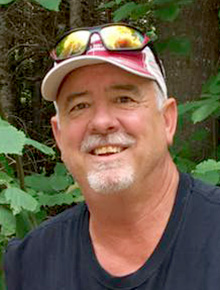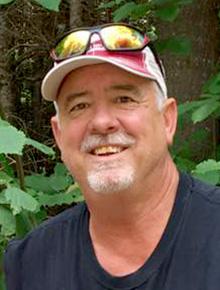
We are still chasing roosters when time allows, but I got committed to a large seeding project that has taken up most of my free time for the past few weeks, and it looks to last a few weeks more, doing it after my day job is finished.
Seeding conservation lands this time of year is challenging, but doing so after the ground temperatures are cold enough that none of the seed will germinate until next spring is the most successful way to do it.
Seeding native grass and flower species requires very specialized equipment. You can substitute some conventional farm equipment, but the outcomes are not usually anywhere as successful if you do.
There are two primary ways to seed native grass and flowers. The first is one most folks have at least heard of, and that is with a seed drill. They look much like a crop planter but the seed boxes are different in order to get the fluffy seeds to fall where they need to. Most seed drills are 8 to 12 feet wide and are pulled with a tractor at about 4 miles per hour.
These work great and can be used in both fall dormant seedings as well as spring seedings done on or after May 1, depending in which state the seeding is being done. Most states also mandate that the seeding effort be complete by about the middle of June. This is a pretty narrow window.
The second method, and the one that I use, is called a pendulum seeder. These look like the units that commercial businesses use to spread salt in a parking lot. A pendulum seeder has a spout that swings back and forth at pretty high speeds and is usually mounted on a three-point hitch on the back of a tractor.
They have very large agitators inside to ensure the seed does not bridge up and fail to disperse. I have converted mine to use a 5-horse power Honda engine, and the unit rides in the back of my Polaris Ranger. I can go into tighter places than a tractor can and into wetter conditions where a tractor would most likely get stuck.
Properly set up, you can seed about seven or eight acres per hour. A drill has a narrower seeding width and runs at 4 mph.
Seeding in the fall allows the seed to be packed down by winter snow and improves the seed-to-soil contact. No packing is required in this situtition.
If you seed in the spring, many operators will run a packer over the site when the seeding is complete. Using a broadcast seeder helps eliminate skips and there is no chance of getting the seed planted too deep.
This is an issue using a drill if the operator in not well versed in their operation. Native seed should be planted as deep as the thickness of the seed. This is as little as a few thousandths of an inch. Plant it a half-inch deep and little to none of that seed will ever become wildlife cover.
Native seed is expensive and, depending on the Federal Farm Program practice, can run as little as $65 for riparian buffers all the way to $500 per acre if you want to supplement your pollinator areas.
I did a demonstration pollinator spot a few years back, with 95 different flower species. The seed was $1,500 per acre for 18 acres.
There are not very many businesses involved in this effort. The equipment costs are quite high and the window for work is very short. Mobilization costs are also substantial.
You cannot haul a tractor 80 miles to plant a 10-acre spot very affordably. Many of these areas are not very big. You need to be close to the action to make it affordable to the farmer or other organization.
The job I landed was the biggest one I have ever done, and after five 10-hour days I am just a little over half done. I do have until June 15 of 2022 to finish, so there is no reason to fret.
You can do this work on top of snow if it is early enough in the winter season or late enough, say in mid-to-late March. In early winter and early spring, the sun angle is strong enough to warm up the seed and it will melt down into the snow. Seeding on a bitterly cold day in January will result in most of the seed just blowing away.
It really doesn’t look like much when the seeding is complete, but just wait two to three years and you might just have some of the best wildlife habitat within a few hundred miles.
Scott Rall, Worthington, is a habitat conservationist, avid hunting and fishing enthusiast and is president of Nobles County Pheasants Forever. He can be reached at scottarall@gmail.com. or on Twitter @habitat champion.



